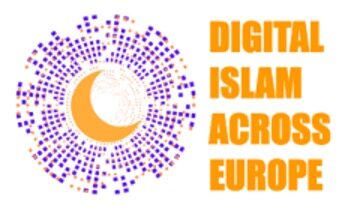Monitoring of Polish Online Media between May 1 and October 31, 2024

Dorota Wójciak (Poland Team)
As part of the Digital Islam Project, the Polish team captured references to women in Islam appearing in Polish online media. The findings presented here are based on data collected between May 1 and October 31, 2024, using the Brand24 – digital media monitoring tool that captures mentions containing selected phrases1. The tool was used to explore public content produced in Polish language across online platforms and to aggregate remarks containing a combination of the following phrases/keywords: “Islam”; “muzułmanie” (“Muslims”); “kobiet” (a sequence of letters appearing in several inflectional forms of the word ‘kobieta‘ (‘“women’”)); “femi” (a sequence of letters appearing in word ‘feminizm’ (‘feminism’) and its derivatives), or “gender.” The searched platforms included Facebook, X (formerly Twitter), Instagram, online forums, blogs, news websites, and other publicly accessible online media.
72% of captured mentions about women in Islam came from social media, with X (Twitter) generating the overwhelming majority (780 out of the 1,059 mentions captured on social media over 700 mentions), which may indicate that this is a key space for discussions on the topic. However, this needs to be interpreted in light of the limitations of the monitoring tools2.
Themes and Sentiment
The findings suggest a dominance of negative sentiment regarding both Islam in general and women in Islam in particular. 70% of all mentions about women in Islam were negative, 28% neutral, and only 2% positive. The sentiment was assessed manually based on a close reading of each post’s language and broader narrative context.
The most common topics within negative mentions were:
- Cultural war narratives (e.g., perceived conflict between Islamic and Western values),
- Allegations of barbarism, often related to stereotypes about Islamic practices,
- Oppression of women in Islamic contexts (e.g., forced veiling, gender segregation, restrictions on education and mobility),
- Demographic fears related to Muslim fertility rates and their perceived impact on Western societies.
Positive mentions were marginal and mostly related to:
- Stories of respect shown by Muslim men towards women (e.g., culturally specific forms of gendered politeness experienced by Polish women during their travels to Arab countries),
- Specific rights of women in some Islamic societies (e.g., right to abortion),
- Promotional content for literature exploring gender relations in Muslim-majority countries.
Neutral mentions tended to include:
- News coverage of political and cultural events (e.g., plans to establish the Sovereign State of the Bektashi Order in Albania, or the opening of a women-only café in a district of Bremen with a large Muslim population),
- Travel articles,
- Cultural or geopolitical commentary (e.g. book reviews).
However, even neutral content often contributed to a negative framing of Islam due to selective topic choices (e.g., the oppression of women in Afghanistan).
Women and Islam in Male-Dominated Spaces of Polish Social Media
Based on the findings described above, our team conducted a more in-depth analysis of the public debate on women and Islam on X (formerly Twitter). The analysis revealed a close connection between Islamophobic and misogynistic narratives. The most prominent and high-reach authors of Islamophobic content were right-wing politicians and influencers associated with the rapidly growing Red Pill and Men’s Rights movements.
Importantly, the interrelation of Islamophobia and misogyny extended beyond the framework of traditionally understood gendered Islamophobia (Zine 2006). Drawing on posts captured during the monitoring of Polish social media, we identified five key dimensions of the relationship between Islamophobia and misogyny in Polish online discourse:
1. Muslims and Islam portrayed as demographic and civilizational rivals
Muslims are depicted as a growing demographic force that threatens to overwhelm and replace white Europeans. This fear is often linked to the idea that Muslim families have significantly higher birthrates. This narration reflects deeply racialized fears about cultural and ethnic displacement. A recurring phrase in this discourse is the claim that “Islam will conquer us through the wombs of their women” or “through the wombs of Polish women” (implying that Polish women who enter romantic relationships with Muslim men contribute to the perceived demographic threat).
2. Muslim men framed as rivals in the struggle for access to women
Muslim men are portrayed as having advantages in accessing women, often presented in contrast to Western men who feel excluded or rejected.
3. Islam and Muslims depicted as allies in defending men’s domination and opposing progressive ideologies (e.g., feminism, LGBT, woke politics)
Islam is framed as a model of traditional masculinity, admired for its strict control over women and opposition to feminism, LGBT rights, and “woke” culture. In such posts, men present the Islamic world as an example for Europe to follow, emphasizing the value of clear gender roles and hierarchical family structures rooted in male authority.
4. Muslims, women, and minorities portrayed as objects of misplaced concern by the political left
Muslims and other minorities are described as undeserving beneficiaries of left-wing politics, which are seen as hostile to white men and “traditional” values.
5. Islam framed as a threat to women’s rights
Islam is presented as inherently misogynistic and violent toward women, used as evidence that multiculturalism endangers women’s safety and freedoms. This narrative blends authentic concerns about women’s rights with their instrumentalization in the service of anti-immigrant and anti-Muslim rhetoric.
Islamophobia without Muslims and the problem of Polish Muslims’ inclusion in online public debate
The phenomenon of Islamophobia in Poland has been described as Islamophobia without Muslims. The term refers to the prevalence of anti-Muslim sentiments in societies with little to no Muslim presence (Górak-Sosnowska 2016). Although the Muslim population in Poland has grown in recent years, it remains proportionally smaller than in most other European countries. As a result, Islam often functions as a symbolic enemy in political and media discourse, fueling fear and hostility despite the limited visibility of actual Muslim communities.
Anti-Islamic sentiment is especially pronounced in political discourse and on highly politicized social media platforms such as X. X is one of the few platforms in Poland that enjoys greater popularity among men than women (Kaliszewski, Lipińska, and Kurszewska 2023) and, according to a survey conducted by the Polish Digital Islam team, it is also the least popular social medium among Polish Muslims. These circumstances create a communicative environment that is particularly hostile toward both Muslims and women while simultaneously serving as an important arena of online political debate in Poland. The lack of effective regulation to counter hate speech further reinforces this hostility, enabling discriminatory narratives to circulate unchecked.
The digital ecosystem effectively marginalises Muslims in mainstream debates on Islam in Poland, a situation further reinforced by the “conscious non-participation” of Polish Muslim religious leaders3. Although there are digital enclaves within Polish social media created by Polish-speaking Muslims, these rarely intersect with spaces of political debate. Importantly, in a society where Muslims constitute a marginal minority, the negative narratives produced online are not counterbalanced by ambivalent everyday experiences – whether positive or negative – of direct contact with Muslims as neighbors or colleagues.
Bibliography
Górak-Sosnowska K., 2016, “Islamophobia without Muslims? The Case of Poland”, Journal of Muslims in Europe 5(2): 190-204.
Kaliszewski A., Lipińska B., and K. Kurszewska, 2023, Twitter [in] Przewodnik po social media w Polsce, iabPolska.
Zine J., 2006, “Unveiled sentiments: Gendered Islamophobia and experiences of veiling among Muslim girls in a Canadian Islamic school.” Equity & Excellence in Education 39(3): 239-252.
- The data was collected in collaboration with IMPRESS GROUP Sp. z o.o.back
- The Brand24 tool does not process audio or video content, meaning that audiovisual posts – more common on platforms such as Instagram or TikTok – were not captured in the data collection unless they were accompanied by textual descriptions. Additionally, the analysis excluded private Facebook groups and posts from non-public profiles, which often are characterized by higher levels of activity and more nuanced discussions than public-facing content.back
- The term “conscious non-participation” was applied by the Polish Digital Islam Team – Mateusz Chudziak and Katarzyna Górak-Sosnowska – to strategies described by leaders of Muslim organisations in Poland in context of their online presence and visibility.back
Image: Anna Grasso. Generated by AI Gemini. 06.05.2025
